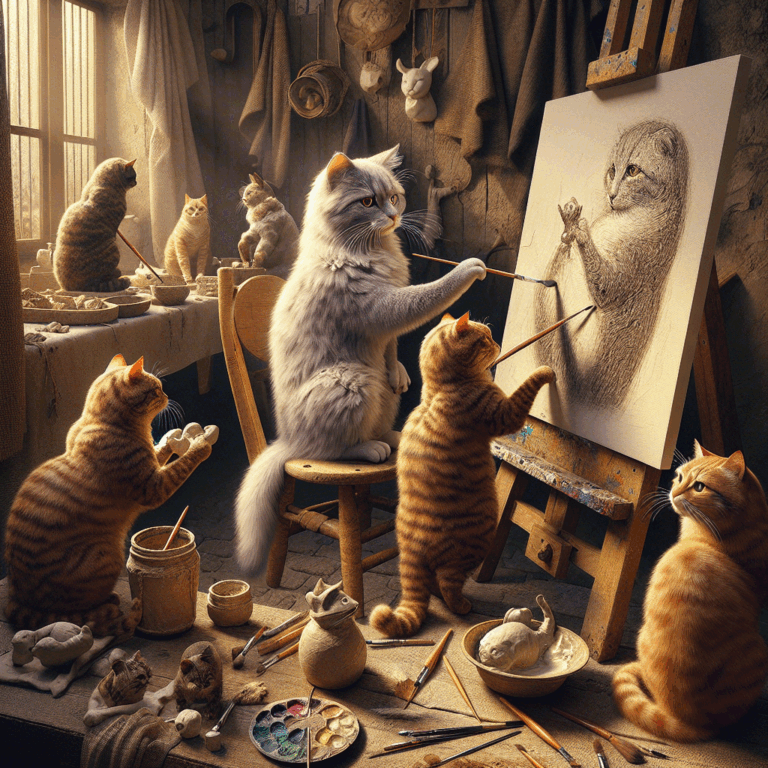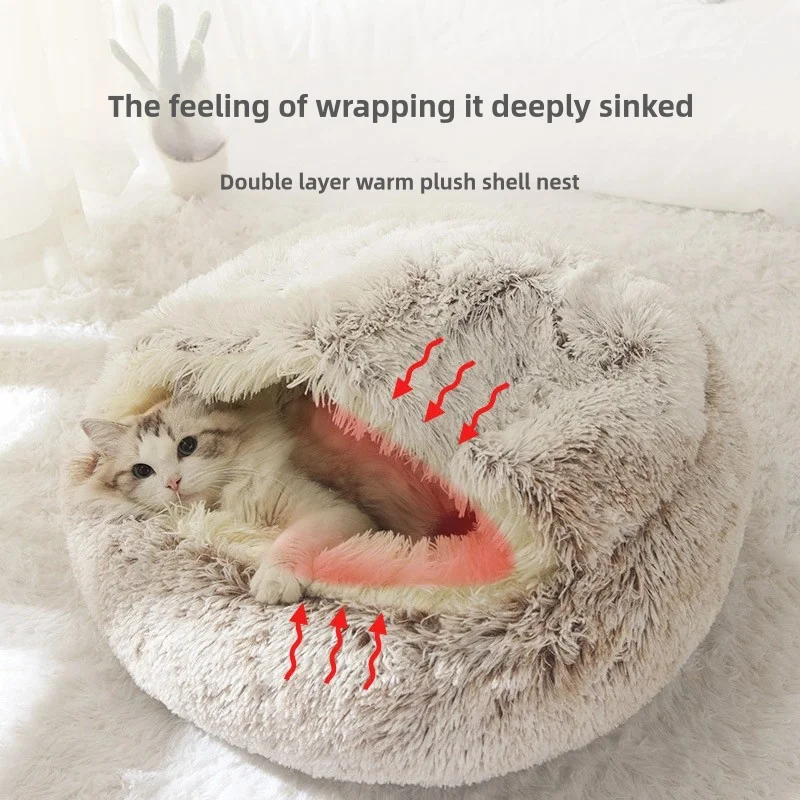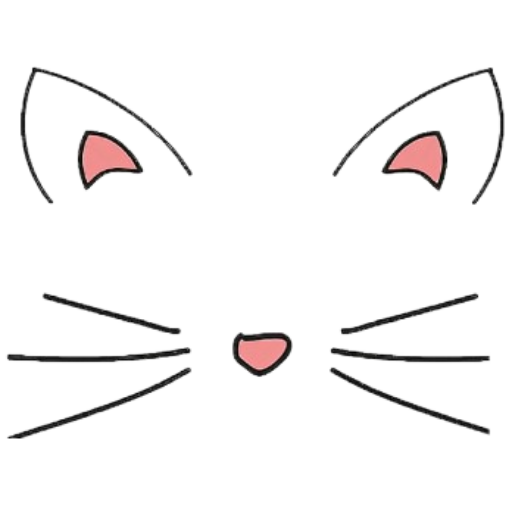The Feline Artists: Cats and Their Influence on the World of Art
- No Comments
In the ever-evolving world of art, one might not immediately consider the impact small, furry creatures have had on the creative processes that shape our visual landscape. Yet, cats have been influential muses for artists across centuries, leaving an indelible mark on various art forms, from painting and sculpture to digital and street art. Their enigmatic presence, graceful movements, and expressive features have captured the imagination of countless artists, leading to a rich tapestry of feline-inspired works.
Historically, cats have been depicted in artworks since ancient times. In Ancient Egypt, cats were revered and often featured in tomb paintings and sculptures as symbols of protection and grace. Fast forward to the Renaissance, and we find cats subtly appearing in the backgrounds of paintings, adding a layer of domesticity or mystery to the scene. Leonardo da Vinci, a known admirer of animals, famously sketched cats in his notebooks, fascinated by their anatomical structure and fluid motion.
In the 19th century, cats took center stage in the works of French artist Théophile Steinlen, whose iconic “Le Chat Noir” poster became a symbol of the avant-garde art scene in Paris. Similarly, the Impressionists and Post-Impressionists, including Edouard Manet and Pierre-Auguste Renoir, frequently incorporated cats into their compositions, using them to explore themes of intimacy and everyday life.
The 20th century saw a shift in how cats were represented, as artists began to experiment with abstraction and surrealism. Pablo Picasso, ever the innovator, depicted cats in his distinct Cubist style, deconstructing their form to explore the relationship between space and perception. Meanwhile, Surrealists such as Salvador Dalí infused their works with dreamlike cats that challenged viewers’ perceptions of reality.
In contemporary art, cats continue to inspire. The digital age has given rise to a new genre of cat art, with internet memes and viral videos turning ordinary felines into global sensations. Artists like Ai Weiwei and Banksy have leveraged the internet’s fascination with cats to make bold statements about social and political issues, using the universal appeal of these creatures to engage audiences worldwide.
Street art, too, has embraced the feline form, with murals of cats adorning walls in cities from New York to Tokyo. These public displays not only celebrate the cat’s aesthetic allure but also serve as social commentary, often highlighting issues of urbanization, community, and the environment.
Photography, an art form born in the modern era, has also been profoundly influenced by cats. Photographers like Walter Chandoha, known as the “father of cat photography,” dedicated his life’s work to capturing the essence of cats in various moods and settings, paving the way for future generations of animal photographers.
As we look to the future, it is clear that the bond between cats and the art world will continue to flourish. The accessibility of digital platforms allows artists of all disciplines to reach new audiences and reinterpret the feline form in innovative ways. Whether through painting, sculpture, digital media, or public art, cats will undoubtedly remain a source of creative inspiration, challenging artists to explore the boundaries of their craft while celebrating the timeless allure of one of humanity’s most beloved companions.

In the ever-evolving world of art, one might not immediately consider the impact small, furry creatures have had on the creative processes that shape our visual landscape. Yet, cats have been influential muses for artists across centuries, leaving an indelible mark on various art forms, from painting and sculpture to digital and street art. Their enigmatic presence, graceful movements, and expressive features have captured the imagination of countless artists, leading to a rich tapestry of feline-inspired works.
Historically, cats have been depicted in artworks since ancient times. In Ancient Egypt, cats were revered and often featured in tomb paintings and sculptures as symbols of protection and grace. Fast forward to the Renaissance, and we find cats subtly appearing in the backgrounds of paintings, adding a layer of domesticity or mystery to the scene. Leonardo da Vinci, a known admirer of animals, famously sketched cats in his notebooks, fascinated by their anatomical structure and fluid motion.
In the 19th century, cats took center stage in the works of French artist Théophile Steinlen, whose iconic “Le Chat Noir” poster became a symbol of the avant-garde art scene in Paris. Similarly, the Impressionists and Post-Impressionists, including Edouard Manet and Pierre-Auguste Renoir, frequently incorporated cats into their compositions, using them to explore themes of intimacy and everyday life.
The 20th century saw a shift in how cats were represented, as artists began to experiment with abstraction and surrealism. Pablo Picasso, ever the innovator, depicted cats in his distinct Cubist style, deconstructing their form to explore the relationship between space and perception. Meanwhile, Surrealists such as Salvador Dalí infused their works with dreamlike cats that challenged viewers’ perceptions of reality.
In contemporary art, cats continue to inspire. The digital age has given rise to a new genre of cat art, with internet memes and viral videos turning ordinary felines into global sensations. Artists like Ai Weiwei and Banksy have leveraged the internet’s fascination with cats to make bold statements about social and political issues, using the universal appeal of these creatures to engage audiences worldwide.
Street art, too, has embraced the feline form, with murals of cats adorning walls in cities from New York to Tokyo. These public displays not only celebrate the cat’s aesthetic allure but also serve as social commentary, often highlighting issues of urbanization, community, and the environment.
Photography, an art form born in the modern era, has also been profoundly influenced by cats. Photographers like Walter Chandoha, known as the “father of cat photography,” dedicated his life’s work to capturing the essence of cats in various moods and settings, paving the way for future generations of animal photographers.
As we look to the future, it is clear that the bond between cats and the art world will continue to flourish. The accessibility of digital platforms allows artists of all disciplines to reach new audiences and reinterpret the feline form in innovative ways. Whether through painting, sculpture, digital media, or public art, cats will undoubtedly remain a source of creative inspiration, challenging artists to explore the boundaries of their craft while celebrating the timeless allure of one of humanity’s most beloved companions.


